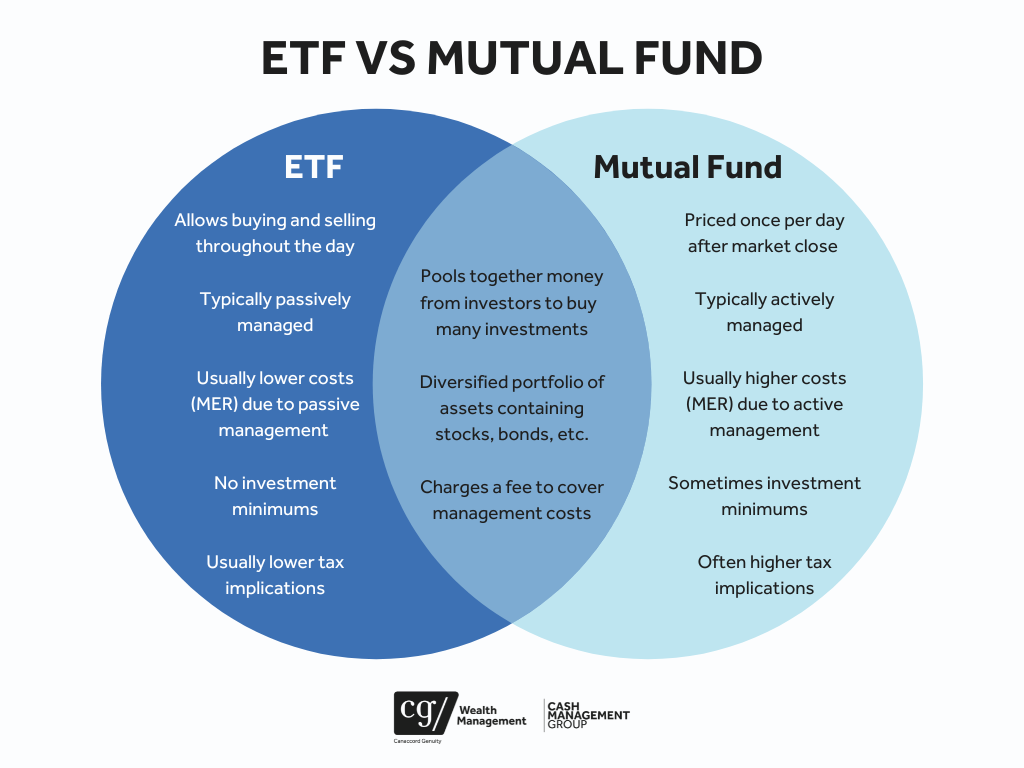ETFs vs Mutual Funds: Which is Right for You?
Exchange-Traded Funds (ETFs) and mutual funds are two very popular investment vehicles that allow you to invest in a diversified portfolio of assets, without directly owning the underlying securities. While both aim to help investors achieve their financial goals, they have distinct characteristics that make them suitable for different investment strategies.
ETFs are investment funds that trade on stock exchanges, much like individual stocks. They typically track a specific market index, such as the Dow Jones, and aim to replicate its performance. ETFs offer intraday trading, allowing investors to buy or sell shares throughout the trading day at market prices, just like with individual stocks. This liquidity and flexibility can be advantageous for those seeking short-term trading opportunities.
On the other hand, mutual funds pool money from multiple investors to invest in a diversified portfolio managed by professional fund managers. They are priced only once a day, after the market closes, based on the net asset value (NAV) of the underlying assets. Mutual funds are often favored by long-term investors due to their potential for active management and personalized strategies.
Which is More Tax Efficient?
ETFs are designed uniquely in that they closely mirror the value of the assets they hold. Authorized Participants (APs) keep a watchful eye on demand and respond promptly to avoid big differences between the ETF's price and its actual worth, or its NAV.
This process brings a tax advantage. Unlike mutual funds, ETFs don't often trigger capital gains taxes for investors who aren't frequently trading shares. This is because when ETF shares are redeemed, it's an "in kind" exchange – ETF shares for the actual assets. This tax-efficient approach is a plus for long-term investors.
Which has Lower Costs?
Cost-sensitive investors often find the allure of ETFs irresistible due to their potentially lower annual fees and absence of investment minimums. Most ETFs follow a passive management approach, mirroring market indexes. However, if you're inclined to invest smaller amounts regularly through strategies like dollar-cost averaging, be mindful of trading commissions. Frequent trading can chip away at returns, overshadowing the initial cost advantage of ETFs.
Comparatively, mutual funds come with their own set of considerations. They often require a minimum investment and entail higher expenses like management and operational fees. Yet, within these fees lies the value of active management. Skilled managers curate the fund's investments, strategically selecting and managing them for optimum returns. This hands-on approach involves a deeper involvement in investment decisions, potentially justifying the higher costs. It's worth noting that mutual fund fees encompass more than just management – they often include the cost of financial advice, providing investors with expert insights tailored to their goals.
Which has Lower Risk?
The risk factor is a crucial concern when evaluating investment options. However, definitively categorizing ETFs or mutual funds as lower or higher risk proves elusive. Risk level hinges on equitable stock weighting and who is managing the ETF or mutual fund. Despite sharing akin strategies or indexes, both vehicles can employ distinct construction approaches. That is why prior to investing, diligent scrutiny of a fund's composition and management is imperative for both ETFs and mutual funds.
In the end, the decision between ETFs and mutual funds is about aligning your investment choice with your financial strategy and objectives.
If you have any questions or need advice, you can connect with one of our financial advisors at 604-643-0101 or cashgroup@cgf.com.
Market Updates
Our market commentary breaks down the latest business, financial and money news. If you’d like to receive all of our market update emails, send us an email by clicking the subscribe button. If you found this content helpful, share it widely!

